
Recovery Reimagined: Using Cannabis for Post-Workout Muscle Recovery
In the pursuit of peak physical performance, the realm of fitness constantly seeks new avenues to optimize recovery and enhance muscle regeneration post workout. As
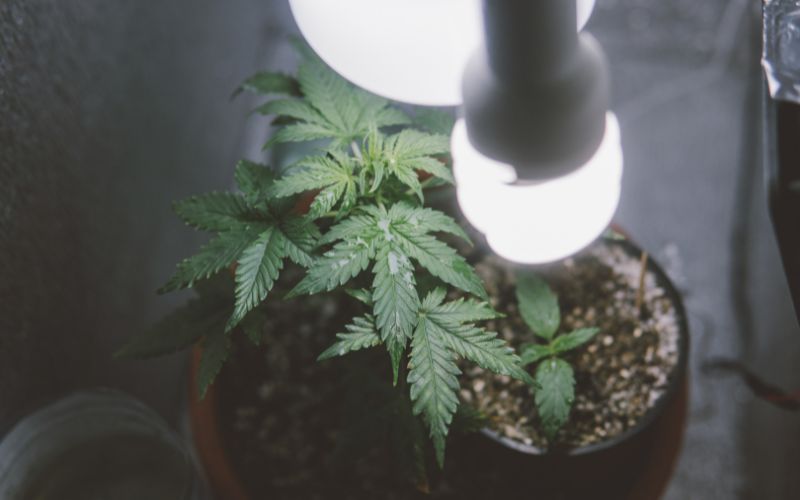
The growing popularity of cannabis can be attributed to several factors. Firstly, the changing legal landscape and increasing acceptance of cannabis for both medical and recreational purposes have led to a surge in its popularity. As more regions legalize cannabis, curiosity and interest surrounding the plant have soared. Secondly, the expanding body of scientific research on cannabis has shed light on its potential therapeutic benefits, such as pain relief, stress reduction, and management of various medical conditions. This has fueled greater interest and acceptance among individuals seeking alternative treatment options. Moreover, the cannabis industry has experienced significant innovation and diversification, offering a wide range of products to cater to different consumer preferences. Understanding the cannabis cultivation process is crucial for several reasons. It enables consumers to make informed choices by assessing the quality and safety of the products they consume. Additionally, it empowers individuals interested in entering the cannabis industry to navigate the complexities of cultivation, optimize their operations, and contribute positively to the sector’s growth. Furthermore, understanding cultivation fosters a deeper appreciation for the plant, its unique growth cycle, and the craftsmanship involved in producing high-quality cannabis.
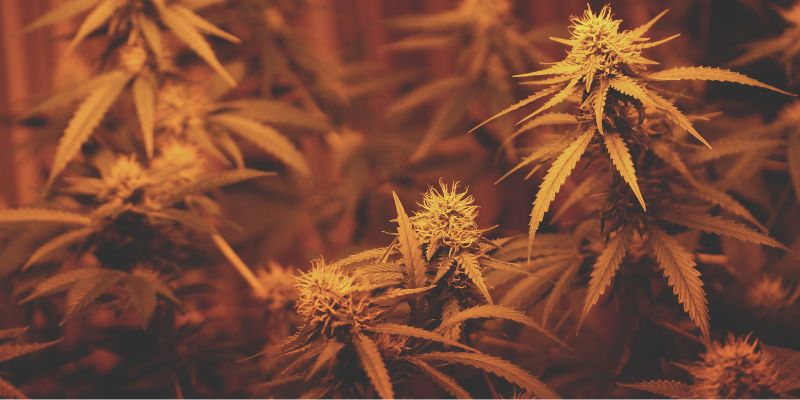
The history of cannabis cultivation spans thousands of years, beginning with its ancient origins and early uses. Cannabis has a rich history dating back to ancient civilizations, where it was valued for its versatile properties. It is believed to have originated in Central Asia and was cultivated for its fiber, seeds, and medicinal properties. Cannabis cultivation has been documented throughout history, with civilizations such as the Chinese, Egyptians, and Greeks utilizing the plant for various purposes. In ancient China, cannabis was used for medicinal purposes, as well as for making textiles and paper. The Egyptians incorporated cannabis into religious rituals and utilized it for medicinal and industrial purposes. The Greeks recognized its medicinal properties and documented its use in treating various ailments.
Over time, cultivation techniques have evolved significantly. From early cultivation in open fields to more sophisticated methods, such as indoor growing and hydroponics, cannabis cultivation has become increasingly specialized. Modern cultivation practices incorporate scientific advancements in lighting, nutrient management, and genetics to optimize yield and cannabinoid profiles. The history of cannabis cultivation showcases how the plant has been deeply intertwined with human civilization and highlights the ongoing development and refinement of cultivation techniques throughout the ages.
Cannabis is a flowering plant that belongs to the Cannabis genus. It is known for its various uses, including medicinal, recreational, and industrial purposes. Understanding its anatomy and genetics is essential for various applications, cultivation, and research.
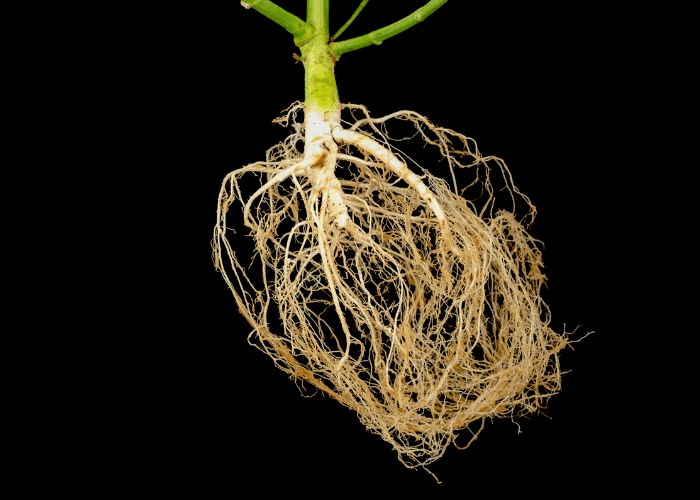
Roots: The cannabis plant has a network of roots that anchor it in the soil and absorb water and nutrients from the ground.
Stem: The stem provides structural support to the plant and is responsible for transporting water, nutrients, and carbohydrates between the roots and the leaves/flowers.
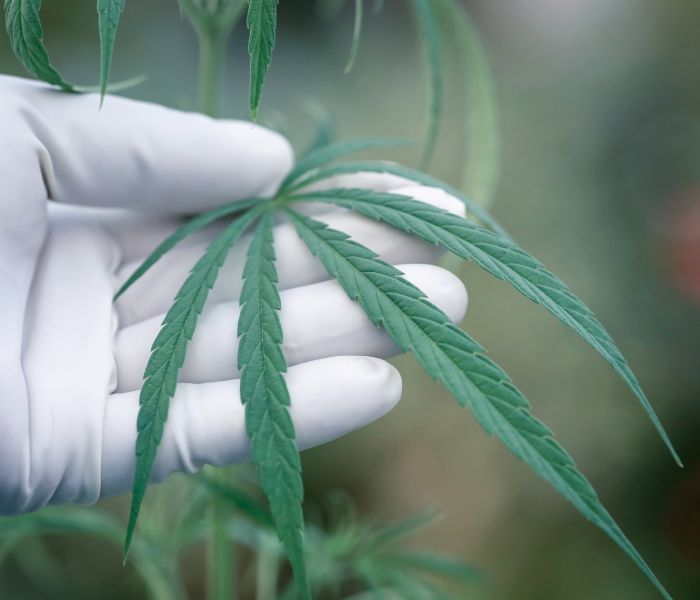
Leaves: Cannabis leaves are compound leaves, meaning they consist of multiple leaflets. They are usually palmately (fan-shaped) arranged, with serrated edges. The leaves play a crucial role in photosynthesis, converting light into energy for the plant.
Nodes: Nodes are points on the stem where leaves, branches, and buds (inflorescences) emerge.
Internodes: The spaces between the nodes on the stem.
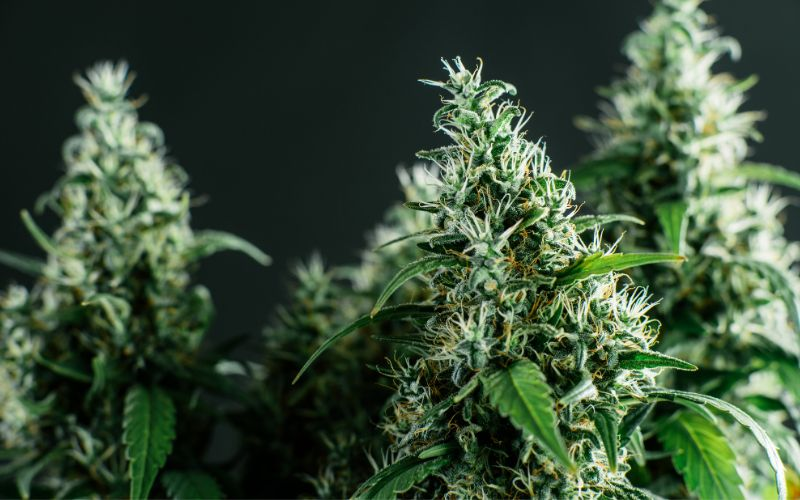
Flowers/Buds: The reproductive part of the female cannabis plant. Buds are where the highest concentration of cannabinoids and terpenes is found, making them valuable for medicinal and recreational purposes.
Pistils: Small, hair-like structures that emerge from the flowers. They are usually white but can change color to orange or red as the plant matures.
Stigma: The tip of the pistil, which is sticky and captures pollen during pollination.
Stamen: The male reproductive part of the cannabis plant. Male plants produce pollen that fertilizes female plants to make female plants produce seeds.
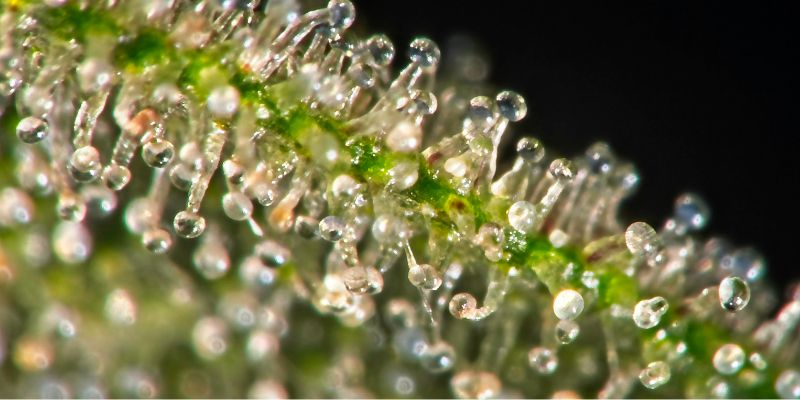
Trichomes: Tiny, crystal-like structures that cover the surface of cannabis flowers, leaves, and even stems. Trichomes are rich in cannabinoids and terpenes and are responsible for the production of resin.
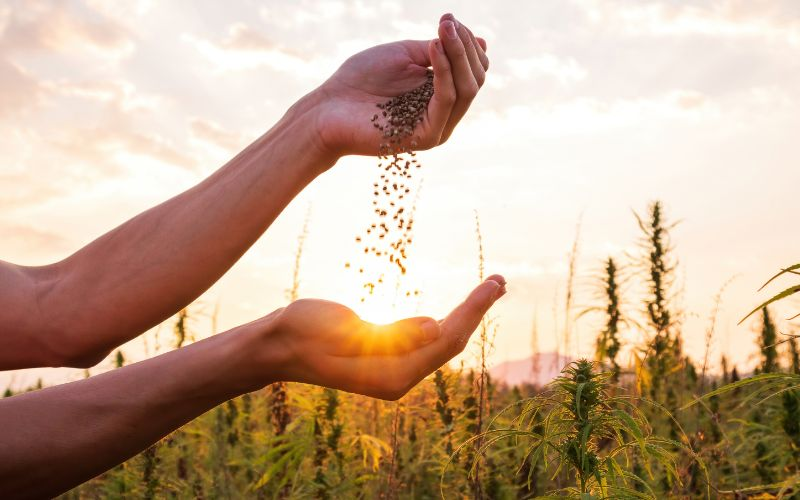
Cannabis genetics are influenced by various factors, including the plant’s lineage, breeding methods, and environmental factors. Breeders have used selective breeding techniques to develop strains with specific characteristics, such as higher cannabinoid content, unique flavors, and diverse medicinal properties.
The genetic makeup of a cannabis plant determines its cannabinoid profile, terpene profile, and overall effects. The most well-known cannabinoids include THC (tetrahydrocannabinol) and CBD (cannabidiol), but there are many others, each with its potential therapeutic effects.
In recent years, advances in genetics and molecular biology have allowed researchers to delve deeper into the cannabis genome, providing valuable insights into the plant’s potential, as well as opportunities for further development and optimization for various applications.
Cannabis Sativa is believed to have originated in regions near the equator, where it evolved to thrive in warm and tropical climates. Sativa plants typically have a tall and slender structure with long internodal spacing. This growth pattern allows for better light penetration and airflow. These strains usually have longer flowering periods, ranging from 10 to 16 weeks or even longer, depending on the specific strain.
Sativa strains are associated with uplifting, energetic, and cerebral effects. They are often preferred for daytime use as they tend to promote creativity, focus, and sociability. These strains often have higher levels of THC relative to CBD, contributing to the more pronounced psychoactive effects.
Cannabis Indica is another primary subspecies of the Cannabis plant. It is believed to have originated in the Hindu Kush region of the Indian subcontinent. Indica strains have adapted to colder and mountainous environments.
These plants are typically shorter and bushier compared to Sativa strains. They have shorter internodal spacing, resulting in a more compact and dense structure. The leaves are broader and have more rounded leaflets compared to Sativa leaves. Indica strains generally have shorter flowering periods, usually around 8 to 12 weeks.
Indica strains are known for their relaxing, calming, and sedative effects. They are commonly used for stress relief, pain management, and promoting sleep. These strains often have higher levels of CBD relative to THC, which contributes to their more therapeutic and body-centered effects.
Cannabis Ruderalis is the third subspecies of the Cannabis plant and is native to regions with short growing seasons, such as parts of Eastern Europe and Russia. Ruderalis strains are the least common and least studied of the three subspecies.
Ruderalis plants are usually smaller and less robust than Sativa and Indica strains. They have a bushy appearance with short internodal spacing. Their leaves are similar to Indica leaves, with broad and rounded leaflets. One unique characteristic of Ruderalis strains is their autoflowering trait- this means they start flowering based on age rather than changes in light cycle, allowing them to flower regardless of the photoperiod. These strains are not typically used for their psychoactive effects as they have low levels of THC. Instead, they are sometimes bred with other subspecies to create autoflowering hybrids.
Genetics play a pivotal role in cannabis cultivation and significantly impact the overall success and quality of the crop. The importance of genetics in cannabis cultivation can be understood through the following key points:
Plant Characteristics: Cannabis genetics determine various plant traits, including growth structure, size, leaf shape, and flowering time. Different strains exhibit distinct physical appearances and growth patterns, allowing cultivators to select plants that are well-suited to their specific cultivation environment and objectives.
Cannabinoid Profile: The cannabinoid profile, which includes THC, CBD, and other cannabinoids, is primarily determined by the plant’s genetics. Different strains have varying concentrations of these compounds, resulting in a wide range of psychoactive and medicinal effects. The right genetics can produce cannabis plants with desired potency and therapeutic properties.
Terpene Profile: Terpenes are aromatic compounds found in cannabis that contribute to its unique smell and taste. They also interact with cannabinoids to produce an entourage effect, enhancing the overall medicinal potential of the plant. Genetic variations influence the types and amounts of terpenes present in different strains.
Yield and Productivity: Certain cannabis strains have genetic predispositions to higher yields and better productivity under specific growing conditions. Selecting strains with strong genetics in this regard can lead to more substantial harvests and better use of resources.
5. Disease Resistance: Some cannabis strains possess genetic resistance to pests and diseases, making them less susceptible to infestations and reducing the need for chemical interventions. Robust genetics can result in healthier, more resilient plants.
Breeding and Hybridization: Understanding cannabis genetics allows breeders to develop new strains through controlled crossbreeding. They can create hybrids that combine desirable traits from different strains to produce unique and specialized varieties.
Legal Compliance: In regions with legal restrictions on cannabis cultivation, the genetic makeup of a strain can impact its legal status. Some strains may have higher THC content and fall under stricter regulations, while others with higher CBD content may have more lenient restrictions.
Consistency in Production: With consistent and stable genetics, cultivators can ensure that each crop’s characteristics and effects are reliably reproducible. This is especially crucial for commercial growers who aim to produce a consistent product for consumers.
Research and Development: Understanding cannabis genetics is essential for conducting scientific research and advancing the field of cannabis cultivation and medicine. By studying the plant’s genetic makeup, researchers can uncover new therapeutic potentials and develop specialized strains to address specific medical conditions.
In conclusion, genetics play a foundational role in cannabis cultivation, influencing everything from plant appearance and cannabinoid content to medicinal properties and yield. Cultivators, researchers, and consumers alike benefit from understanding and leveraging the genetics of cannabis to optimize its growth, maximize its potential benefits, and develop innovative strains tailored to different needs and preferences.
Growing cannabis successfully requires careful consideration of various environmental factors and the application of appropriate growing techniques. Here are some key factors and techniques to consider:
Light is a critical factor in cannabis cultivation as it directly impacts plant growth, cannabinoid production, and overall yield. Understanding the light requirements and implementing the optimal lighting setups is essential for successful indoor cannabis cultivation. Here’s what you need to know:
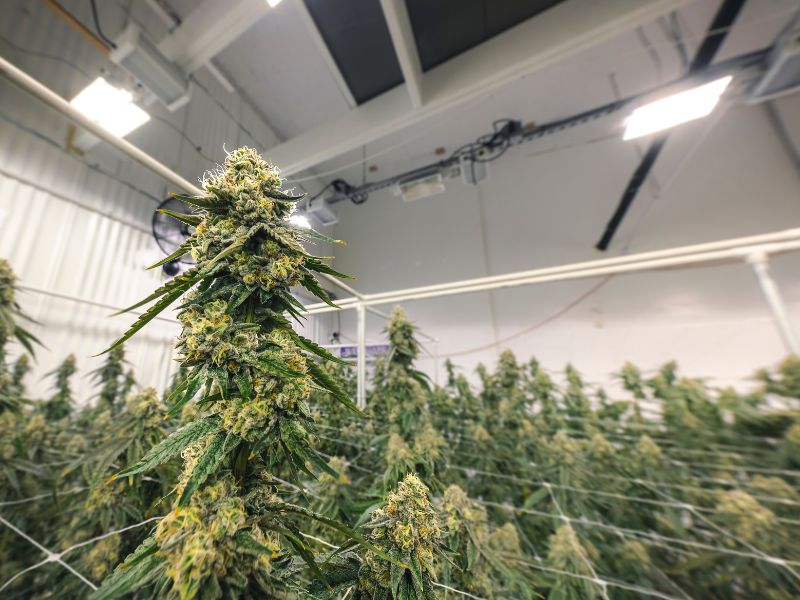
Light Requirements:
Light Intensity: Cannabis plants require strong light intensity to support healthy growth and robust bud development. The intensity of light is measured in foot-candles or lux. During the vegetative stage, cannabis plants thrive with light intensities between 5,000 to 10,000 lux or 500 to 1,000 foot-candles. In the flowering stage, higher intensities of 10,000 to 50,000 lux or 1,000 to 5,000 foot-candles are beneficial.
Light Spectrum: Cannabis plants utilize light in the blue spectrum (400-500 nm) during the vegetative stage for leafy growth and in the red spectrum (600-700 nm) during the flowering stage to promote bud development. A full-spectrum light source that includes both blue and red wavelengths is ideal for the entire growth cycle.
Light Duration (Photoperiod): During the vegetative stage, cannabis plants generally require 18-24 hours of light per day. For the flowering stage, it is essential to provide 12 hours of uninterrupted darkness each day to trigger the plants to start flowering.
Optimal Lighting Setups:
High-Intensity Discharge (HID) Lights: HID lights are commonly used for cannabis cultivation. Metal Halide (MH) bulbs provide the blue spectrum needed during the vegetative stage, while High-Pressure Sodium (HPS) bulbs emit the red spectrum required for flowering. These lights can produce intense light and are cost-effective for larger grow spaces.
Light Emitting Diodes (LEDs): LED grow lights are becoming increasingly popular due to their energy efficiency, customizable spectrum, and low heat output. High-quality LED panels can deliver optimal light for the entire growth cycle, reducing the need for spectrum changes.
Fluorescent Lights: Compact Fluorescent Lights (CFLs) and T5 fluorescent lights are suitable for smaller grow spaces or as supplemental lighting. They are energy-efficient and emit lower heat, making them a good choice for seedlings and young plants.
Light Placement and Coverage: Proper placement of lights is crucial to ensure even light distribution and avoid hotspots or shadowed areas. Adjust the height of the lights as the plants grow to maintain the optimal light intensity.
Light Timer: Use a timer to control the light cycle automatically. For example, set the timer for 18 hours of light during the vegetative stage and 12 hours during the flowering stage.
Reflective Surfaces: Use reflective materials around the grow area to bounce light back onto the plants and improve overall light efficiency.
Always ensure that the lighting setup you choose meets the specific needs of your cannabis plants and the size of your grow space. Proper lighting is key to maximizing growth, yield, and cannabinoid production, whether you’re growing for personal use or as a commercial cannabis cultivator.
Temperature, humidity, and air circulation are crucial environmental factors that significantly impact cannabis cultivation. Proper management of these factors ensures healthy plant growth, optimal cannabinoid production, and prevents common issues such as mold and pests. Here’s a breakdown of each consideration:
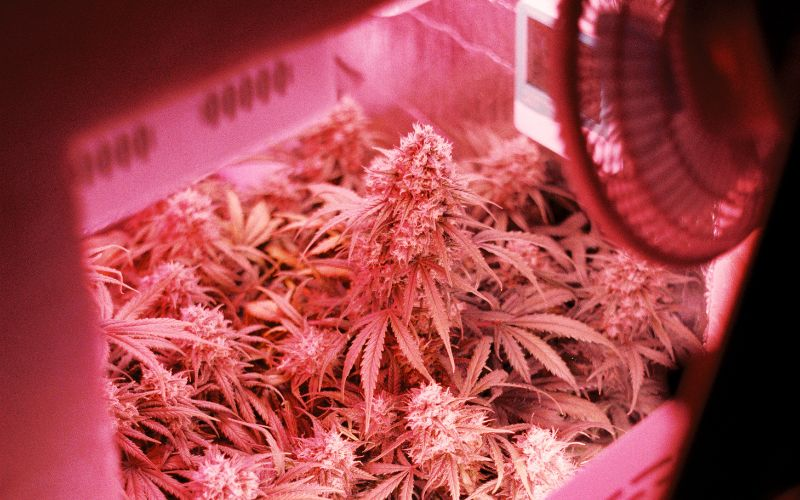
Cannabis plants thrive in a temperate climate, with the ideal temperature range for most strains being between 20°C to 30°C (68°F to 86°F) during the day. During the night, slightly cooler temperatures between 18°C to 24°C (64°F to 75°F) are preferred.
High temperatures can cause heat stress, leaf curling, and reduced yields, while low temperatures can slow down growth and increase the risk of pests and diseases. Always avoid extreme temperature fluctuations, as they can stress the plants and negatively impact growth.
The optimal humidity level for cannabis cultivation varies depending on the growth stage. During the vegetative stage, higher humidity levels between 50% to 70% are suitable for promoting leafy growth. In the flowering stage, humidity should be lowered to around 40% to 50% to prevent mold and mildew growth on the buds.
Excessively high humidity levels can lead to issues like powdery mildew, bud rot, and reduced airflow, while low humidity can cause leaf wilting and hinder nutrient uptake.
Proper air circulation is crucial for preventing mold, promoting transpiration, and ensuring that carbon dioxide (CO2) levels are sufficient for photosynthesis. Adequate ventilation helps maintain consistent temperature and humidity levels and prevents the buildup of stale air.
Use oscillating fans to promote airflow within the grow area, but avoid placing them too close to the plants to prevent excessive drying of leaves. Additionally, consider installing an exhaust system with intake and exhaust fans to maintain steady air exchange and vent out stale air.
Maintaining proper temperature, humidity, and air circulation is a delicate balance that can significantly impact the health and productivity of cannabis plants. Cultivators should regularly monitor these factors using thermometers and hygrometers and make adjustments as needed. Automated environmental control systems can also be used to maintain optimal conditions consistently.
It’s important to note that different strains and growth stages may have varying temperature and humidity preferences. Understanding the specific needs of your cannabis plants and adjusting the environment accordingly will help you achieve the best possible results in your cultivation efforts.
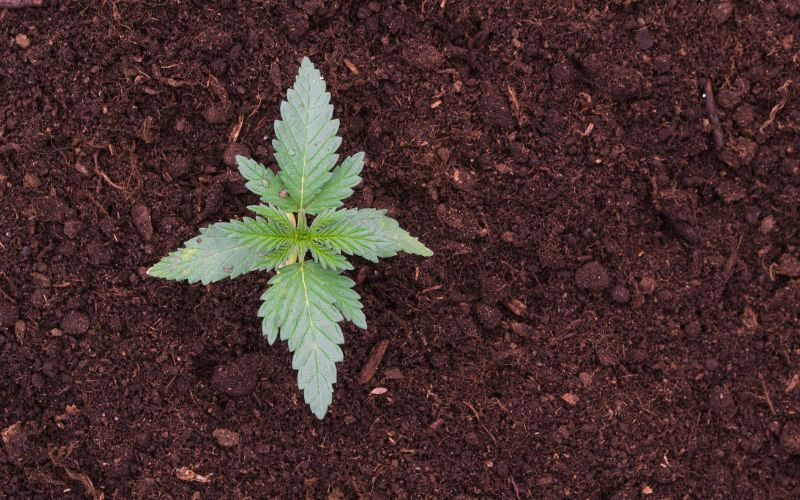
Proper soil types, nutrients, and fertilizers are essential for healthy cannabis plant growth. The right combination ensures that the plants receive the necessary nutrients throughout their life cycle. Here’s a guide to selecting the appropriate soil, nutrients, and fertilizers for cannabis cultivation:
Well-Draining Soil: Cannabis plants prefer soil that allows excess water to drain effectively. Compacted or waterlogged soil can lead to root rot and other issues. A mix of soil, perlite, and vermiculite or coco coir is a popular choice for providing good drainage.
pH Level: The soil pH should ideally be between 6.0 and 7.0. This range ensures that essential nutrients are available to the plants without being locked up due to soil acidity or alkalinity.
Nutrient-Rich Soil: Cannabis plants are heavy feeders and require nutrient-rich soil to support their growth. Using high-quality organic compost or adding amendments like worm castings, bat guano, and fish meal can provide the necessary nutrients.
Cannabis plants require a mix of primary nutrients (macronutrients) and trace elements (micronutrients) for optimal growth. These nutrients are usually found in the soil or are supplemented through fertilizers. The primary nutrients are:
Nitrogen (N): Important for vegetative growth, leafy development, and overall plant vigor.
Phosphorus (P): Vital for root development, flower formation, and energy transfer within the plant.
Potassium (K): Essential for overall plant health, disease resistance, and the transportation of water and nutrients.
Organic vs. Synthetic Fertilizers: Both organic and synthetic fertilizers can be used. Organic fertilizers, derived from natural sources, promote soil health and microbial activity. Synthetic fertilizers are chemically formulated and provide precise nutrient ratios, allowing for more controlled nutrient delivery.
N-P-K Ratios: Fertilizers are labeled with their N-P-K ratios, indicating the percentage of nitrogen, phosphorus, and potassium they contain. For the vegetative stage, a fertilizer with a higher ratio of nitrogen (e.g., 10-5-5) is suitable. During flowering, a fertilizer with higher phosphorus (e.g., 5-10-10) is preferred.
Slow-Release Fertilizers: Slow-release fertilizers provide nutrients over an extended period, reducing the risk of overfeeding and nutrient imbalances. These are particularly useful for outdoor cultivation or for plants that require less frequent feeding.
Organic Soil Amendments: In addition to synthetic fertilizers, organic soil amendments like compost, bone meal, kelp meal, and blood meal can be used to enhance nutrient content and improve soil structure.
Regardless of the type of fertilizer used, it’s crucial to follow the manufacturer’s instructions and avoid overfertilizing, which can lead to nutrient toxicity and other plant issues.
Regular monitoring of the soil’s nutrient levels, along with visual assessments of the plants’ health, will help determine if any adjustments are needed. Providing the right soil, nutrients, and fertilizers will support healthy cannabis growth and contribute to higher yields and quality buds.
Watering and irrigation are crucial aspects of cannabis cultivation, as they directly impact plant health, growth, and overall yield. Proper watering practices help prevent issues like overwatering, underwatering, and root rot. Here’s a guide to watering and irrigation methods for cannabis cultivation:
The frequency of watering depends on various factors, including the size of the plants, the growth stage, temperature, humidity, and the type of growing medium. For young seedlings and clones, water lightly and avoid saturating the soil. Allow the top inch of the growing medium to dry out before watering again.
As plants mature, they will require more water. However, it’s essential to let the growing medium partially dry out between watering sessions to avoid suffocating the roots.
Hand Watering: This method involves manually watering the plants using a watering can or a gentle stream from a hose nozzle. Hand watering allows for precise control over the amount of water applied to each plant.
Drip Irrigation: Drip systems deliver water directly to the base of each plant through tubes and emitters. Drip irrigation is efficient, conserves water, and minimizes the risk of overwatering.
Soaker Hoses: Soaker hoses are porous hoses that release water slowly and evenly along their length. They can be placed on the soil surface or buried beneath the growing medium to deliver water directly to the root zone.
Automated Irrigation Systems: These systems use timers or sensors to control watering schedules automatically. They can be set up with various irrigation methods, such as drip irrigation or sprinklers.
Ensure the water used for irrigation is of good quality and free from contaminants. If using tap water, allow it to sit for 24 hours to allow chlorine to dissipate before using it on the plants. The pH level of the water should ideally be between 6.0 and 7.0. Adjusting the pH is crucial to ensure nutrient availability and prevent nutrient lockout.
Proper drainage is essential to prevent waterlogged soil, which can lead to root rot and other issues. Ensure that the growing containers have drainage holes and that excess water can escape freely.
During the vegetative stage, plants require more frequent watering due to their rapid growth. Water as needed to keep the soil consistently moist but not waterlogged.
In the flowering stage, reduce watering slightly to promote bud development. Allow the growing medium to dry out slightly between waterings, but ensure the plants do not experience extreme drought stress.
Observing the plants and the growing medium closely will help determine the appropriate watering schedule. Adjusting the watering routine based on environmental conditions and the specific needs of the cannabis plants will lead to healthy growth and optimal yields.
Overwatering or underwatering can stress the plants. It’s essential to provide the right amount of water to maintain healthy plants’ root systems and prevent root rot.
Avoid watering the leaves to minimize the risk of mold and other issues.
Techniques like topping, pruning, and Low-Stress Training (LST) can be used to control the plant’s shape, promote even growth, and increase yields.
Cannabis plants require specific nutrients at different stages of growth. NPK (Nitrogen, Phosphorus, Potassium) fertilizers are commonly used, along with micronutrients.
Careful monitoring and adjusting of nutrient levels are necessary to avoid nutrient deficiencies or toxicities.
Regular inspection and preventative measures are essential to protect the plants from pests and diseases. Integrated Pest Management (IPM) strategies can be used to minimize the use of harmful chemicals.
The timing of the harvest significantly impacts the potency and overall quality of the buds. Harvesting too early or too late can lead to suboptimal results.
Trichome color and pistil development are often used as indicators of readiness for harvest.
Keep in mind that the legal status of cannabis cultivation varies by location, and it’s crucial to adhere to local laws and regulations. Whether growing cannabis for personal use or commercial purposes, always seek the necessary permits and follow best practices to ensure a successful and legal cultivation process.
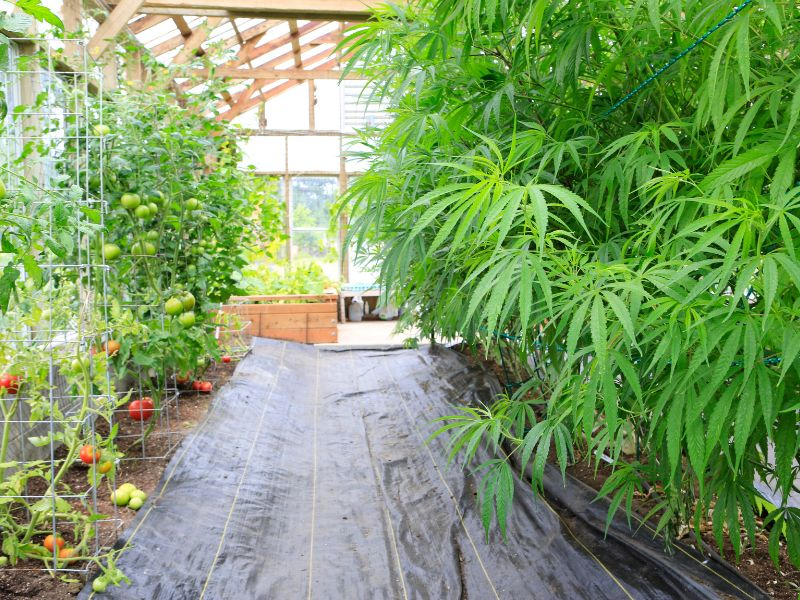
When it comes to growing cannabis, two primary cultivation methods exist: indoor and outdoor. Each method offers unique advantages and challenges, influencing the plant’s growth, quality, and overall yield. In this section, we will explore the key differences between indoor and outdoor cannabis cultivation, discussing the various factors that cultivators need to consider when choosing the best approach for their specific needs and goals.
Indoor cannabis cultivation offers several advantages and disadvantages, making it a popular choice for many growers. Here are the pros and cons of indoor cultivation:
Controlled Environment: One of the significant advantages of indoor cultivation is the ability to have complete control over the growing environment. Growers can adjust factors like temperature, humidity, light intensity, and photoperiod, providing optimal conditions for the plants throughout their life cycle.
Year-Round Cultivation: Indoor cultivation allows for year-round growing, unaffected by seasonal changes or climate variations. This ensures a continuous and reliable supply of cannabis, regardless of external weather conditions.
Security and Privacy: Growing cannabis indoors offers more privacy and security compared to outdoor cultivation, reducing the risk of theft or discovery by unauthorized individuals.
Pest and Disease Control: Indoors, the risk of pest infestations and diseases is significantly reduced, as the grow space can be maintained in a clean and controlled manner.
Quality Control: The controlled environment in indoor setups often leads to higher-quality cannabis. Growers can manipulate factors to encourage desirable cannabinoid and terpene production, resulting in potent and flavorful buds.
Stealth Growing: Indoor cultivation allows for “stealth growing,” making it easier to conceal the operation and comply with legal regulations in regions with restrictive cannabis laws.
Higher Costs: Indoor cultivation requires more significant initial investment and ongoing expenses. Costs can include lighting equipment, ventilation systems, grow medium, nutrients, and electricity to power the grow lights.
Energy Consumption: The intensive use of artificial lighting in indoor setups can lead to higher energy consumption and, consequently, higher carbon footprints compared to outdoor cultivation.
Space Limitations: Indoor growers are often restricted by available space, which can limit the number of plants they can grow and the potential yield.
Ventilation Challenges: Proper ventilation is crucial in indoor cultivation to prevent heat buildup and ensure adequate air exchange. Inadequate ventilation can lead to mold, mildew, or other humidity-related issues.
Environmental Impact: The production of certain indoor cultivation materials, such as plastics and synthetic nutrients, may have environmental impacts if not managed responsibly.
Learning Curve: Indoor cultivation can be more complex and require a steeper learning curve, especially for inexperienced growers. Mastering the various environmental and technical aspects takes time and experience.
Ultimately, the decision to grow cannabis indoors or outdoors depends on individual preferences, available resources, local regulations, and the desired level of control over the whole growing process and environment. For many growers, indoor cultivation offers the ability to create a controlled, efficient, and secure growing space, resulting in high-quality cannabis harvests.
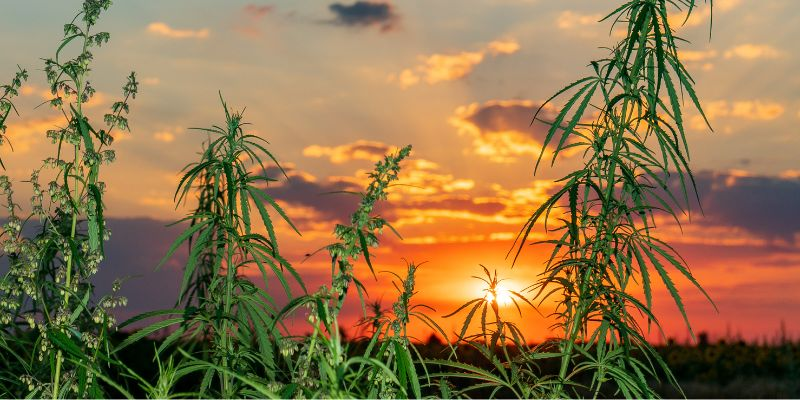
Outdoor cultivation of cannabis has its own set of advantages and challenges, making it a popular choice for some growers and regions with suitable climates. Let’s explore the advantages and challenges of outdoor cannabis cultivation:
Natural Sunlight: Outdoor-grown cannabis benefits from the full spectrum of natural sunlight, providing optimal light intensity and a rich spectrum of wavelengths. This can lead to more robust growth and potentially higher cannabinoid and terpene production.
Cost-Effectiveness: Compared to indoor cultivation, outdoor growing is generally more cost-effective, as it requires fewer artificial inputs like lighting and ventilation. This can lead to lower overall expenses, especially for small-scale growers.
Sustainability: Outdoor cultivation has a lower carbon footprint since it relies on natural sunlight and reduces the need for energy-intensive artificial lighting.
Larger Plant Size: In spacious outdoor environments, cannabis plants can grow larger and more naturally, resulting in higher yields per plant compared to indoor setups.
Natural Environment: Growing in the natural environment allows cannabis plants to interact with local soil, climate, and microbial life, potentially resulting in unique flavors and terpene profiles.
Scalability: Outdoor cultivation is easily scalable, allowing growers to expand their operations without the constraints of indoor space limitations.
Climate Dependence: Outdoor cultivation is highly dependent on the local climate. Unfavorable weather conditions, such as excessive rain, hail, early frost, or intense heatwaves, can significantly impact plant health and yield.
Pest and Disease Pressure: Growing outdoors exposes cannabis plants to a more extensive range of pests and diseases, which can be challenging to manage without chemical interventions.
Lack of Control: Unlike indoor cultivation, outdoor growers have limited control over the growing environment. They must rely on natural conditions, which can be unpredictable and uncontrollable.
Security Risks: Outdoor cultivation is more susceptible to theft and vandalism due to its visibility and accessibility. Growers may need to invest in security measures to protect their crops.
Legal Restrictions: Outdoor cultivation is subject to local regulations and may not be allowed in certain areas due to legal restrictions on cannabis cultivation.
Harvest Timing: Outdoor cultivation is influenced by the natural photoperiod, which means growers may have less control over when the plants start flowering and when the harvest occurs.
Despite the challenges, many cannabis enthusiasts and growers appreciate the natural and authentic experience of outdoor cultivation. By choosing the right strains and carefully managing the environment, outdoor growers can achieve impressive yields and produce high-quality cannabis in harmony with nature.
Hydroponics and other alternative growing methods offer innovative and efficient ways to cultivate cannabis. These methods provide better control over plant nutrients and environmental conditions, leading to faster growth and potentially higher yields. Here’s an overview of hydroponics and some other alternative growing methods used in cannabis cultivation.
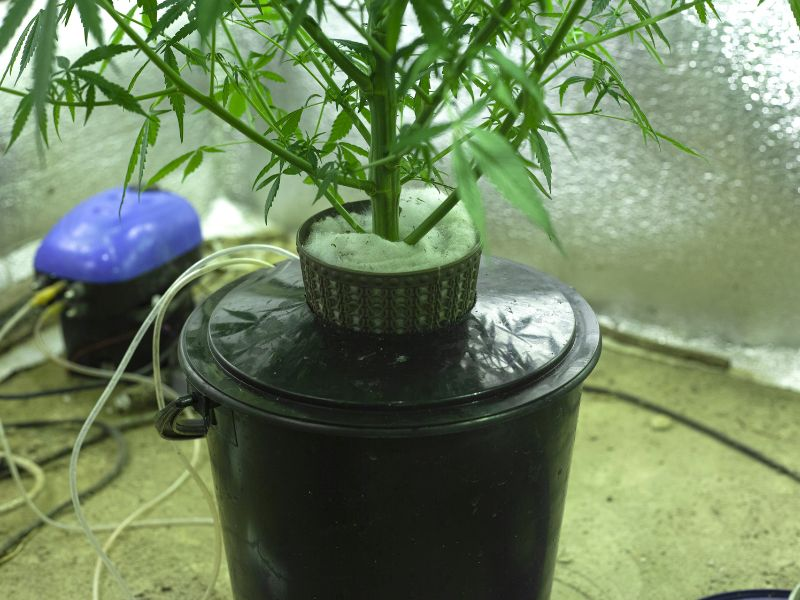
Hydroponics: Hydroponics is a soilless cultivation method where cannabis plants grow in a nutrient-rich water solution instead of traditional soil. The roots are submerged or supported by an inert medium like rockwool, perlite, or clay pellets. Growers can closely monitor and adjust the nutrient mix, pH levels, and water content, providing optimal conditions for cannabis growth. Hydroponic systems can range from simple setups like Deep Water Culture (DWC) to more complex systems like Nutrient Film Technique (NFT) or Ebb and Flow (Flood and Drain).
Aeroponics: Aeroponics is a variation of hydroponics where the roots are suspended in the air, and nutrient-rich water is misted directly onto the roots. This method maximizes oxygen exposure to the roots, promoting faster nutrient absorption and plant growth. Aeroponics is known for its efficiency and water-saving capabilities, making it an eco-friendly option for cannabis cultivation.
Aquaponics: Aquaponics combines hydroponics with aquaculture (fish farming). The system uses fish waste as a nutrient source for the plants, while the plants act as a biofilter, purifying the water for the fish. This symbiotic relationship between fish and plants creates a closed-loop ecosystem where both components benefit from each other’s presence.
Vertical Growing: Vertical growing utilizes vertical space to optimize cannabis cultivation in limited areas. Plants are stacked in multiple tiers, making efficient use of floor space. Vertical growing systems often incorporate hydroponics or aeroponics to provide nutrient-rich water to the plants. This method is popular in urban settings or where space is a premium.
Living Soil: Living soil is an organic and sustainable growing method that focuses on creating a soil ecosystem rich in beneficial microorganisms. It relies on natural composting and decomposition processes to provide nutrients to the plants. The goal is to mimic the conditions found in fertile, healthy soils found in nature. This method promotes soil health and biodiversity and can result in flavorful and terpene-rich cannabis.
No-Till Farming: No-till farming is a regenerative agriculture technique that minimizes soil disturbance. Instead of tilling the soil between crops, organic matter is added on top, preserving the soil structure and microbial life. This approach enhances soil health and nutrient retention while reducing erosion and carbon emissions.
Each alternative growing method has its unique benefits and challenges. Choosing the right method depends on factors like grower experience, available resources, space constraints, and sustainability goals. Whether using hydroponics for precise control or living soil for natural and organic cultivation, these alternative methods offer exciting possibilities for cannabis growers seeking innovative and efficient approaches to cultivation.
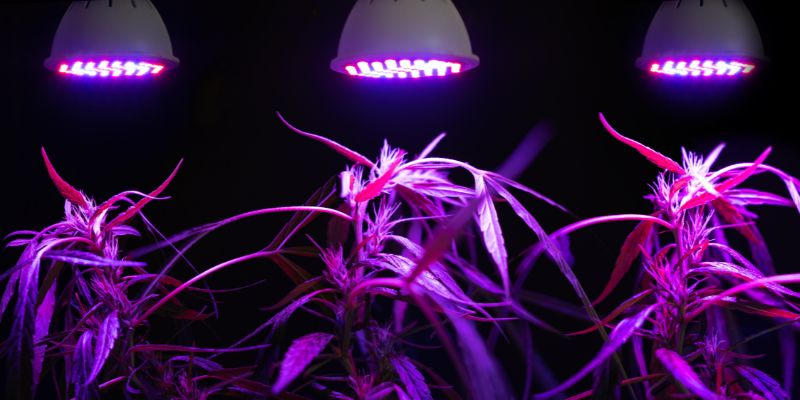
The growth cycle of cannabis, also known as its life cycle, consists of several distinct stages, each with its specific characteristics and requirements. Understanding the different phases of the growth cycle is essential for successful cannabis cultivation. Here’s an overview of the four main stages of the cannabis growth cycle:
Germination is the first stage, where the cannabis seed absorbs water, swells, and sprouts a taproot. The seedling emerges from the soil with a pair of embryonic leaves called cotyledons.
During this stage, the seedling is highly vulnerable, and care must be taken to provide the right conditions, including proper moisture, warmth, and light.
The seedling will develop its first sets of true leaves, and its roots will start spreading out and establishing themselves.
The vegetative stage begins once the seedling has developed a few sets of true leaves and its root system is established.
During this stage, the focus is on vegetative growth, where the plant develops a strong structure, lush foliage, and increases in size.
Cannabis plants need plenty of light (usually 18-24 hours per day), appropriate nutrients, and proper pruning or training techniques to achieve a healthy and productive vegetative growth.
The flowering stage is initiated when the plant begins to receive longer uninterrupted periods of darkness, usually 12 hours of darkness and 12 hours of light (12/12 light cycle) or a variation to induce flowering.
During this stage, the plant transitions its focus from vegetative growth to the production of flowers (buds) that contain cannabinoids, terpenes, and other compounds.
The flowering stage typically lasts 8 to 12 weeks, depending on the strain and environmental conditions. The length of the flowering stage directly affects the final yield and potency of the harvested buds.
Once the flowering stage is complete, it’s time to harvest the matured cannabis buds. Harvesting should be done when the trichomes (resin glands) on the buds are at their peak maturity, indicating the highest cannabinoid and terpene content.
After harvest, the buds undergo a curing process, where they are dried and cured in controlled conditions to improve flavor, aroma, and smoothness. Proper curing enhances the overall quality and potency of the final product.
It’s important to note that not all cannabis plants have the same growth cycle duration. Indica strains generally have shorter growth cycles, while Sativa strains tend to have longer ones. Additionally, autoflowering strains have a unique growth cycle as they automatically transition from the vegetative stage to the flowering stage based on age, not light exposure.
Understanding the growth cycle of cannabis allows growers to provide the appropriate care and environment at each stage, ensuring healthy, vigorous plants, and maximizing the quality and quantity of the final harvest.
Understanding cannabis cultivation is of paramount importance for both aspiring and experienced growers, researchers, and consumers.
In conclusion, delving into the world of cannabis cultivation offers a rewarding journey for both novices and experienced growers alike. By understanding the nuances of this remarkable plant and the art of cultivation, you unlock the keys to a bountiful and fulfilling cannabis cultivation experience.
Learning about cannabis cultivation is not merely a hobby; it is a pathway to cultivating a deeper connection with nature and the therapeutic properties of the plant. With this knowledge, you gain the power to produce high-quality, sustainable, and safe cannabis products that bring joy and relief to consumers.
Moreover, in a rapidly evolving industry, education is our foundation for progress. As we continue to explore the potential of cannabis and unlock new insights, knowledgeable cultivators drive innovation, research, and the responsible expansion of the cannabis market.
So, whether you are an aspiring home grower, a passionate enthusiast, or a cannabis entrepreneur, I encourage you to embark on this learning journey. Dive into the world of cannabis cultivation, absorb the wisdom of experienced growers, and embrace the science and art behind this versatile plant.
As we foster a community of educated cultivators, we propel the cannabis industry forward, championing sustainability, quality, and safety. Join us in shaping the future of cannabis cultivation, and together, we will unlock the full potential of this incredible plant.
Remember, the first step in this transformative journey is curiosity and the willingness to learn. Embrace the opportunity to be part of a movement that nurtures both the cannabis plant and the growth of knowledge.
Are you ready to unlock the secrets of cannabis cultivation and contribute to a greener, healthier future? Take action today and cultivate a brighter tomorrow. Happy growing!

In the pursuit of peak physical performance, the realm of fitness constantly seeks new avenues to optimize recovery and enhance muscle regeneration post workout. As

In recent years, a notable trend has emerged within the cannabis industry: celebrities stepping into the spotlight as entrepreneurs and advocates for cannabis legalization. From
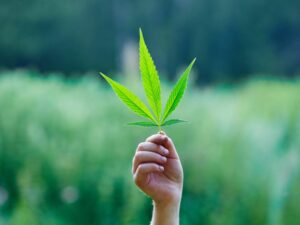
Introduction Microdosing THC (Delta-9-tetrahydrocannabinol), the primary psychoactive compound in cannabis, represents a nuanced approach to cannabis consumption, gaining traction for its promise of reaping therapeutic

Introduction to Cannabis Legalization in Ireland In recent years, the global landscape of cannabis legalization has undergone a seismic shift, with countries across the world
Protected by the United States Agriculture Improvement Act of 2018
FDA DISCLAIMER The statements made regarding these products have not been evaluated by the Food and Drug Administration. The efficacy of these products has not been confirmed by FDA-approved research. These products are not intended to diagnose, treat, cure or prevent any disease. All information presented here is not meant as a substitute for or alternative to information from health care practitioners. Please consult your health care professional about potential interactions or other possible complications before using any product. The Federal Food, Drug, and Cosmetic Act require this notice.
Puro Cannagars, LLC. requires all clients to follow local and federal regulatory guidelines as it pertains with the use and distribution of Delta 8 and all components within Puro Cannagar products. Purchasing from Puro Cannagars constitutes as agreeing to conducting own due diligence on Puro Cannagar products, and following local and federal guidelines on resale, use, and distribution of said products. If it is found that clients are involved in illegal activity, Puro Cannagars, LLC reserves the right to discontinue service without notice.